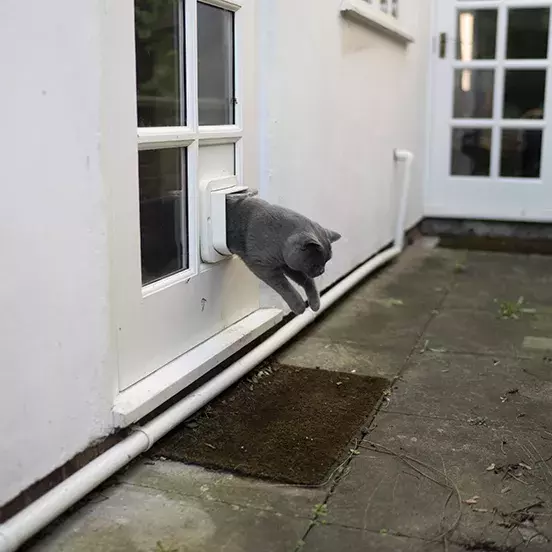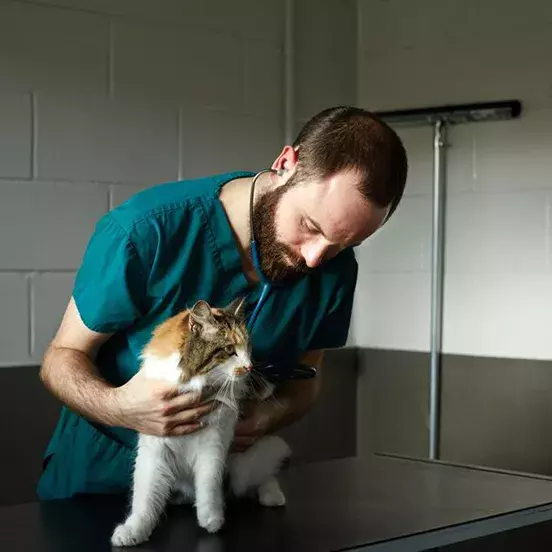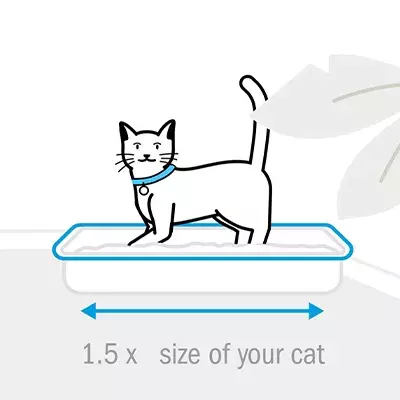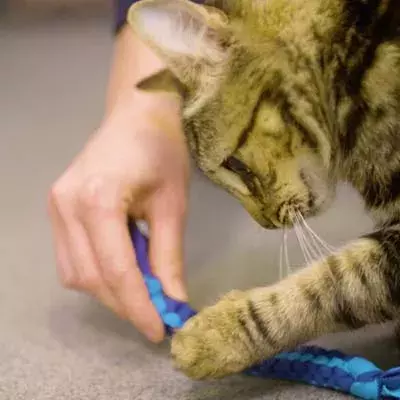FIV in cats might sound scary but cats with the feline immunodeficiency virus want all the same things as any other cat: love, affection and a home to call their own. Carriers of FIV may show no symptoms of the disease for years, if at all, and with a few simple steps you could enjoy the love and affection of an FIV cat long into the future.
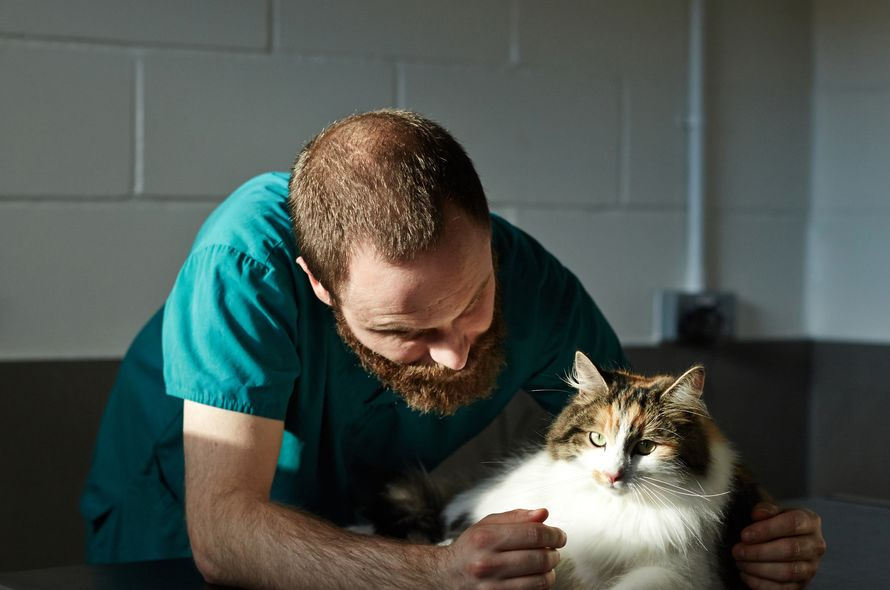
What is FIV?
Feline Immunodeficiency Virus (FIV) is a cat-specific virus that is thought to affect approximately 2-5% of the cat population in the UK.
It is a slow acting virus and many infected cats enjoy a normal lifespan with no apparent health concerns as a result of the virus. FIV is species specific and cannot be passed to humans. If you’re willing to make a few adjustments to your home (both to protect them from illness and other cats from the disease), these cats make wonderful and rewarding companions.
Commonly asked questions about FIV
Biting is the main method of transmission as the virus passes through the saliva to the bloodstream and so unneutered males are more at risk as they are more likely to fight with other cats.
During mating, the male will firmly grip the female by the skin on her neck so there would be a risk to the female if the skin were punctured, although females are less commonly found to be infected and this is not believed to be a significant method of infection.
FIV can potentially be passed on from a pregnant cat to her kittens, although again this is rare. The virus does not last long outside the infected cat’s body, so cannot be transmitted via clothing or equipment etc.
No - FIV only infects cats and does not affect any other species including humans, dogs etc.
Cats with FIV do not need any long-term treatment specifically for FIV and there is no ‘cure’. Provided they remain healthy they will not require any treatment, so measures should be taken to protect the cat from infections and to keep the cat as generally healthy as possible - the healthier a cat, the longer the disease-free period tends to be.
Ensure a healthy lifestyle by providing her with good quality food in appropriate quantities, regular worming, preventative flea treatment and yearly booster vaccinations. If your cat appears unwell, see a vet as soon as possible and treat any infections promptly. Avoid feeding raw foods such as meat due to bacterial risk.
Once a cat is infected with the virus they will remain infected for the rest of their lives. It is difficult to predict the long-term outlook for cats found to be infected with FIV as the “healthy” phase of the infection (with no external signs of illness) can last for many years. Advances in veterinary care can support cats in this stage for much longer than was previously possible.
It is a slow acting virus and many infected cats enjoy a normal lifespan with no apparent health concerns as a result of the virus, but anyone considering rehoming an FIV+ cat should be aware that this is not always the case. The virus depletes the white blood cells and this may eventually cause a gradual decline in the cat’s immune function. A cat with FIV therefore has a greater risk of disease of infection from other viruses and bacteria.
FIV Symptoms
Typically, following infection with the virus, there will be a period of time during which the cat will appear to be in good health. There may then be a period of infection when other signs of disease develop as the cat’s weakened immune system is unable to fight off infection and bacteria in the normal way. Common signs of FIV infection include:-
- Inflammation of the gums/mouth (gingivitis) and mouth ulcers
- Weight loss
- Poor appetite
- Fever
- Inflammation of the membrane around the eyes (conjunctivitis)
- Swollen lymph glands
- Vomiting and diarrhoea
Guidance for owners of FIV+ cats
How can I adjust my home to be best suited for an FIV+ cat?
Due to the FIV infection, it’s considered important not to expose her to other cats, both for their protection (i.e. to prevent her passing on the virus), and her own (she may have a weakened immune system and so could be more susceptible to other diseases transmitted by cats in the neighbourhood). However, being confined indoors would deny her the many benefits that access to the outdoors provides, and therefore potentially compromising her welfare. Instead, the best solution is to not only provide her with opportunities for positive stimulation indoors, but also with an enclosed, enriching, outdoor space.
Why does an FIV+ cat need a garden/outdoor area?
Behaviourally, the domestic cat is very much like her wild cat relatives – what this means is that (depending on her age and temperament) she may be highly motivated to spend a large proportion of her day exploring and seeking out interesting sights, smells, sounds, textures and tastes within her environment. She may get a lot of pleasure from these activities, which will help to keep her both mentally stimulated and physically fit and active.
She may also enjoy having time away from the busy and sometimes unpredictable environment inside of the home, instead preferring to quietly relax in a sunny spot outdoors, perhaps getting a good view of her territory via a high up ledge, or even curling up and sleeping under a bush, or in a specially provided ‘cat den’.
Giving her access to a suitably enriched and stimulating cat proof garden is the best way to allow her to perform these behaviours; all of which are very important for her physical and emotional wellbeing. Ideally, she should have constant access to this space, via a cat flap for example.
The FIV virus will not influence a cat’s temperament or drive to perform these behaviours, and so her needs for positive sensory stimulation and access to quiet areas away from the home are the same as for any non FIV+ cat. Whilst technically it could be possible to provide her with the above opportunities within an indoor only environment, in reality, this is much harder to do, and in most cases not practical due to the space, cost, time and effort required.
What is a cat proof garden?
Cats can easily climb a standard 6ft fence, therefore a properly enclosed garden requires some sort of barrier or structure that makes it physically impossible for cats to climb up, over, and out of the garden. This barrier is typically an overhang of netting secured to the top of an existing framework, such as a fence located around the perimeter of the garden (see illustration below).
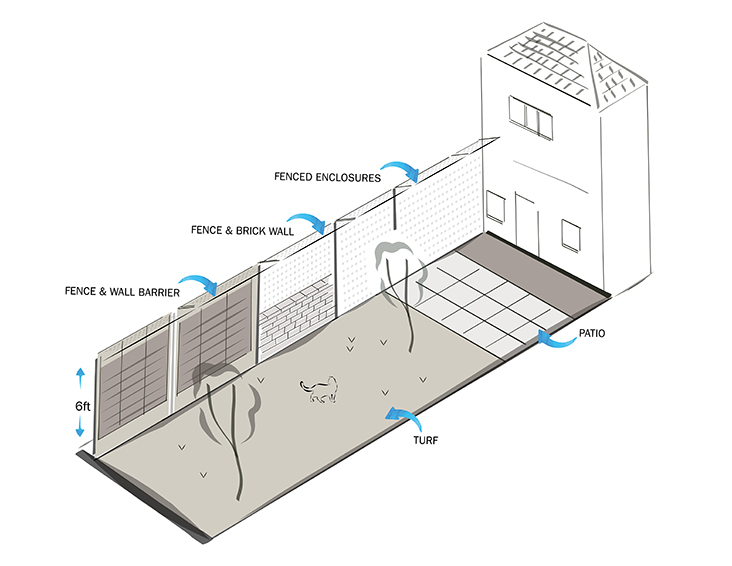
Alternatives to netting include long poles (again attached along the top of a fence) that roll when stepped on, thus making it very difficult for the cat to jump on to and over.
Both these types of barriers should also prevent other cats from being able to enter the garden.
How big should the cat proof garden be? What does it need to have inside it?
The cat proof garden should be large enough to provide her with plenty of things to explore, space to exercise, and the opportunity to go through parts of her predatory sequence (i.e. stalking, chasing and pouncing).
Unless they are very large, and filled with lots of enriching items (such as plants and dense shrubs, tables and chairs and raised ledges), cat runs or outdoor cages are generally not considered sufficient to provide her with a suitable outdoor space.
A suitable cat-friendly garden should include the following features:
- Places to hide to help her feel safe
- Places to get up high so she has a good vantage or look-out point
- Places where she can toilet in a suitable type of ‘substrate’
- Comfortable sunny spots where she can sleep and relax
- Plants and other vegetation she can sniff and explore in
- Shelter from the wind, rain and cold
- A source of fresh drinking water (preferably rain water)
- Something good to scratch on.
Due to the enclosed nature of the garden, your cat won’t be able to roam freely and explore as they may have been used to (particularly if they were previously a stray or came from a rural area). It’s therefore important to ensure your garden is sufficiently stimulating to prevent them from becoming bored or frustrated. The more enrichment (e.g. vegetation, hiding places) and structural complexity (e.g. bits of furniture such as ‘cat houses’, chairs, tables, ledges and ladders, all at different heights) you can add to the garden, the more appealing and positively stimulating this will be for your cat.
A bare open garden with nothing to explore and nowhere to hide is likely to seem both daunting and unappealing to your cat.
Providing positive stimulation indoors
A cat friendly, positively stimulating environment indoors is also very important, particularly if your cat has limited space to roam outside due to the enclosed, cat proofed garden. A cat friendly indoor environment should aim to:
- Contain all the key resources your cat needs (and in suitable locations)
- Be a relatively calm and predictable place for your cat to be
- Contain a quiet place where she can go and spend time undisturbed
- Contain lots of things to keep her entertained and provide her with pleasurable experiences.
For information and advice on how to achieve this, please see our advice on how to make your home cat-friendly and enriching for your cat.
